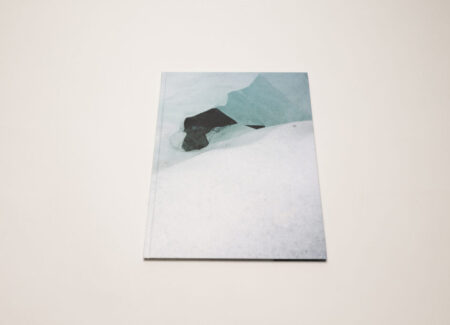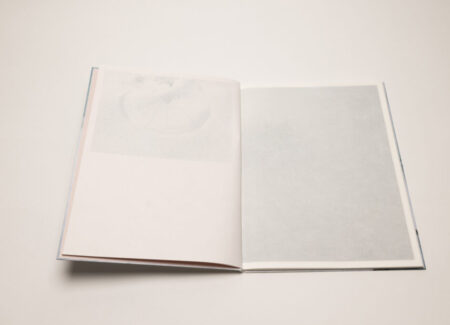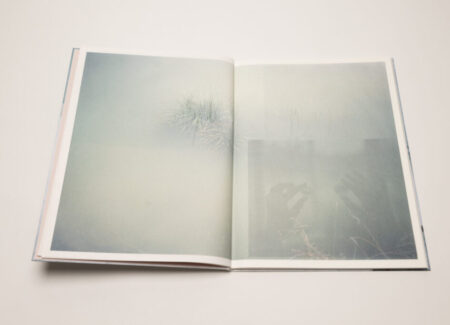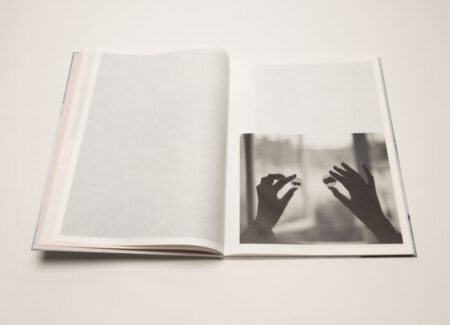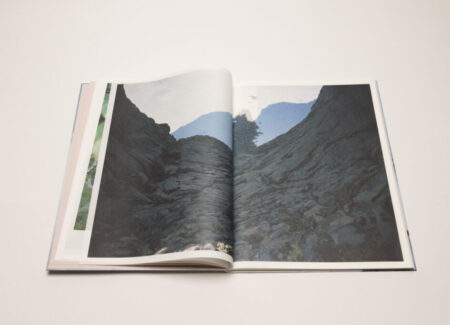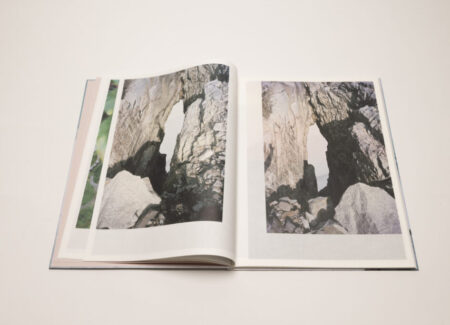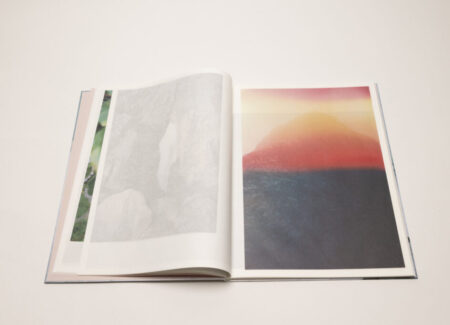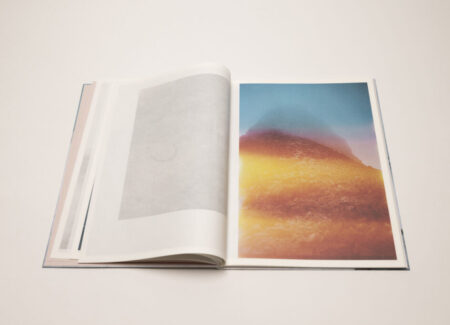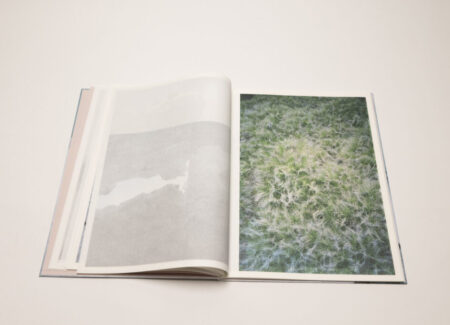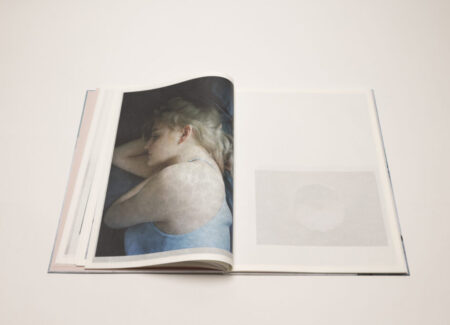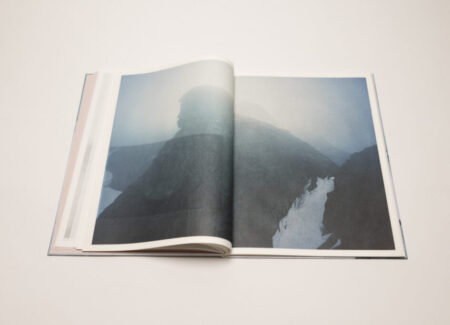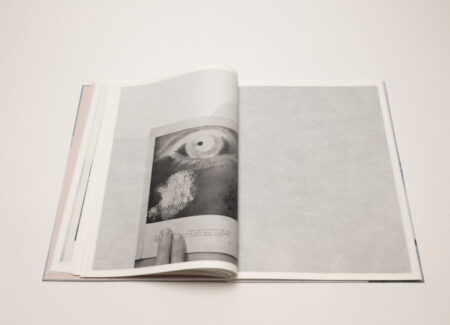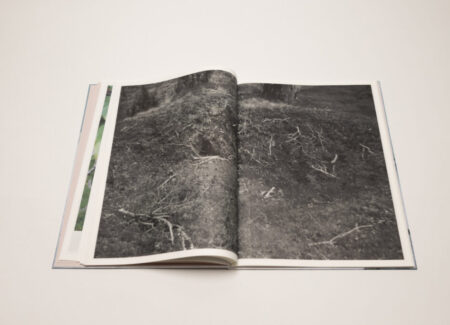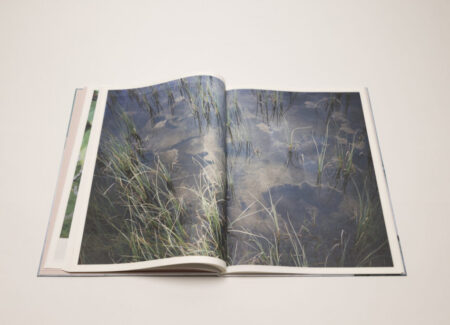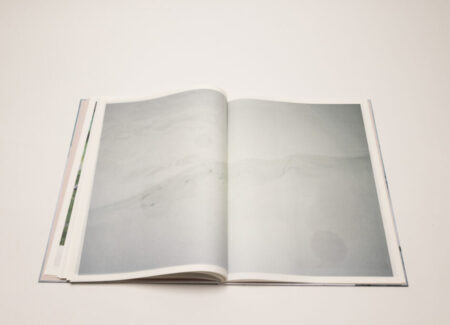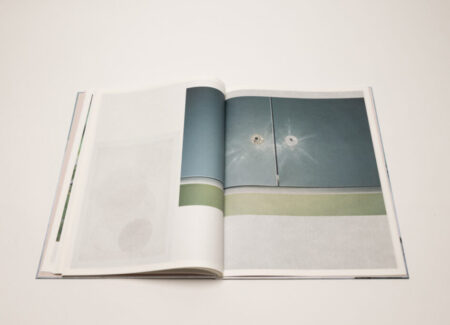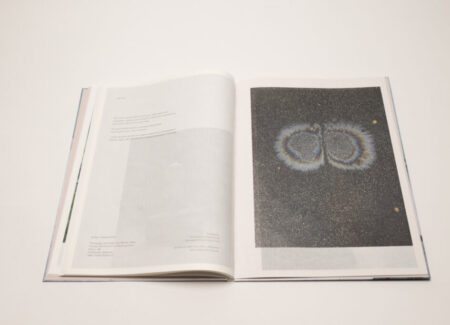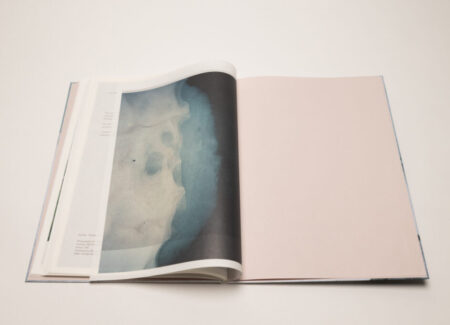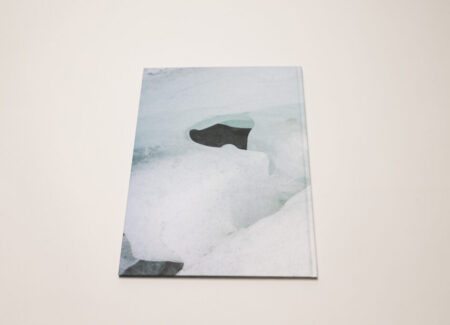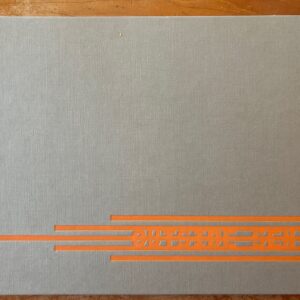JTF (just the facts): Published in 2024 by Multipress (here). Hardcover (21.5 x 29 cm), 96 pages, with 56 color and black-and-white photographs. Includes text by the artist. In an edition of 300 copies. (Cover and spread shots below.)
Commenta/Context: Line Bøhmer Løkken is a Norwegian artist and publisher, who is interested in how to use her work to “engage and experience different places in the broadest sense.” She says that her intention is not only to achieve “a visual experience through photography, but also to express the presence of the body through photography.” A couple of years ago, she published an excellent photobook titled Choreography with Potatoes and Flour (reviewed here). It focused on the artist’s father, who spent his life working with his hands as a baker. The construction of the book smartly used a loose, unbound construction to highlight the graceful physicality of bread making, translating his hands-on knowledge of the craft into compelling images.
Løkken’s new book, titled Dry Eye Dripping Stone, is dedicated to Ylva, the artist’s daughter. Several years ago Ylva was diagnosed with a tumor around her optic nerve and lost sight in one eye, prompting her mother to think about the two gazes that photography possesses: the “optical gaze” and the “tactile gaze”. Optical gaze refers to the gaze as an optical phenomenon seen through a lens or the naked eye, while tactile gaze emphasizes the physical and textured aspects of seeing in printed form. In this new photobook, Lokken attempts to merge the two, fusing the tactile aspects of photographic book making with the semiotic and visual narrative of traditional photography.
Dry Eye Dripping Stone is an extremely slim hardcover book. An abstract photograph that resembles an iceberg or snow formation fills the cover, both front and back. The title is slightly embossed in the lower right corner in a white font, almost invisible, while the artist’s name is placed on the book’s slim spine. The book opens to sugar pink endpapers playfully matching its overall muted colors. The book is printed on light 60g paper, making the pages very thin and relatively translucent, and creating interesting overlaps between images. Except for a short text by the artist at the very end of the book, there are no page numbers, no captions, and no other design elements, inviting us to experience an uninterrupted visual flow. The book easily lays flat making the interaction even more pleasant.
The photographs in Dry Eye Dripping Stone are scenes seen with one eye, just like the way her daughter now sees. In this way, Løkken is interested in the relationship between the body behind the camera and the mechanical camera eye. Her shots of surfaces – water, snow, mud, rocks etc – become particularly prominent, changing from dry to wet and rough. The book opens with a photo of snow and thin straws of dry grass sticking out dropping shadows; as Løkken gets up close, we can almost feel the texture. In another shot that takes up an entire spread, a clump of grass grows in a milky looking water. The thin paper shows through to the next photo that features two hands holding two circular glass objects, like eyes. As we apply pressure to the pages of the book, we also actively participate in the process of experiencing the images, and Løkken’s photographs create a sensual experience, evoking a sense of touch and physicality.
As we move through the book, a vertical shot of grass takes up the entire page, emphasizing its texture and colors. The following page is a profile portrait of a young woman resting her head on her arm and the grass from the previous page is now present on her skin; we can assume it is Ylva, the artist’s daughter. Otherwise, the human presence in Løkken’s photographs is always indirect, via interaction with the environment: a shoe stepping on a muddy surface, a hand holding a stone through a carved hole, two fingers pressing a book page, two legs extended along a wooden floor, etc.
Occasionally there are spreads without images, yet the photographs from surrounding pages can be seen through, creating soft pauses and interruptions. In page after page, these photographs become a record of the artist’s experience, and the layered construction functions in a similar way as our accumulation of memories.
Other artists have also explored the loss of vision and blindness via a photobook format. In her book titled Sokohi (reviewed here), Moe Suzuki examines her father’s deteriorating vision due to glaucoma. Sophie Calle also explored the idea of blindness in her series “Les Aveugles” (“The Blind”); she photographed people born without sight and asked to speak with them on the subject of beauty. Projects on this subject are often filled with blurs, approximations, and atmosphere, and Løkken takes full advantage of the book format to reinforce a tactile experience.
Together with excellent production and printing, the result is a beautiful, gentle, and exciting photobook as an art object. Løkken has dedicated this book to her daughter, noting in her afterword, “You are transformed to a one-eyed being with a monocular vision – like a camera.” Dry Eye Dripping Stone is a very personal project, one that triggers the entire sensory apparatus of the viewer’s body via the attentive combination of photographs and physical book interaction.
Collector’s POV: Line Bøhmer Løkken does not appear to have consistent gallery representation at this time. As a result, interested collectors should likely follow up directly with the artist via her website (linked in the sidebar).
